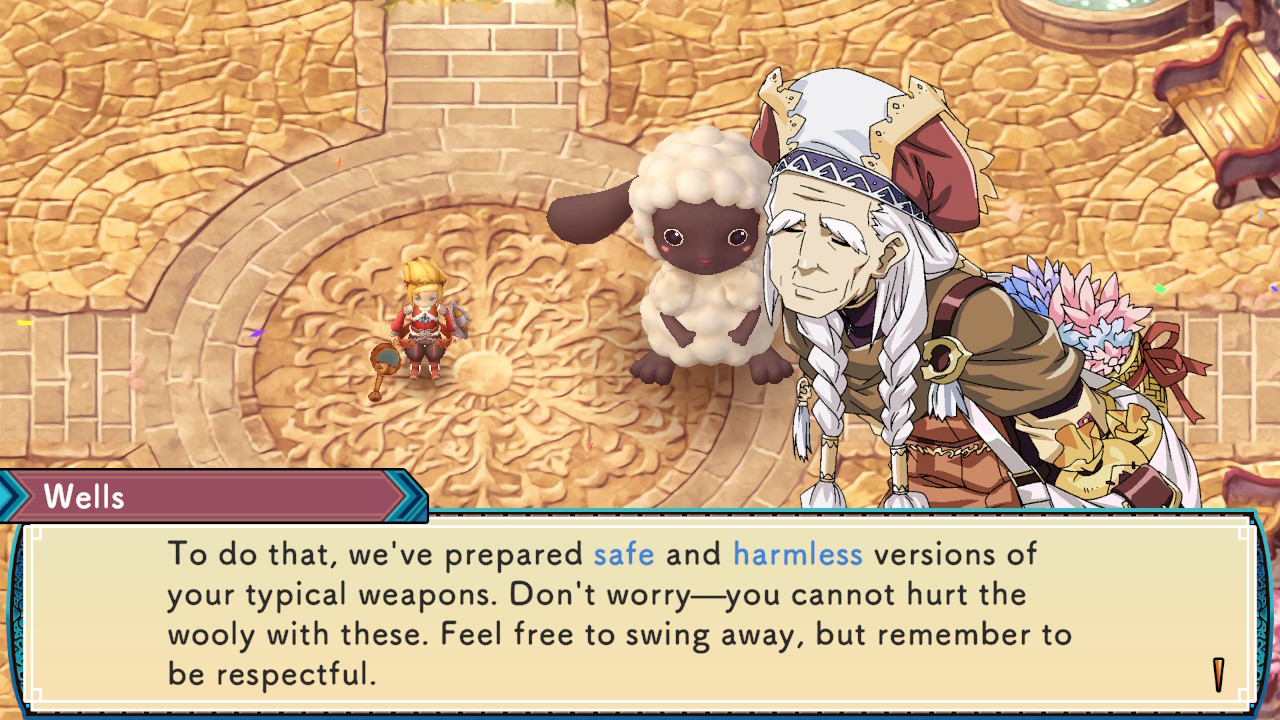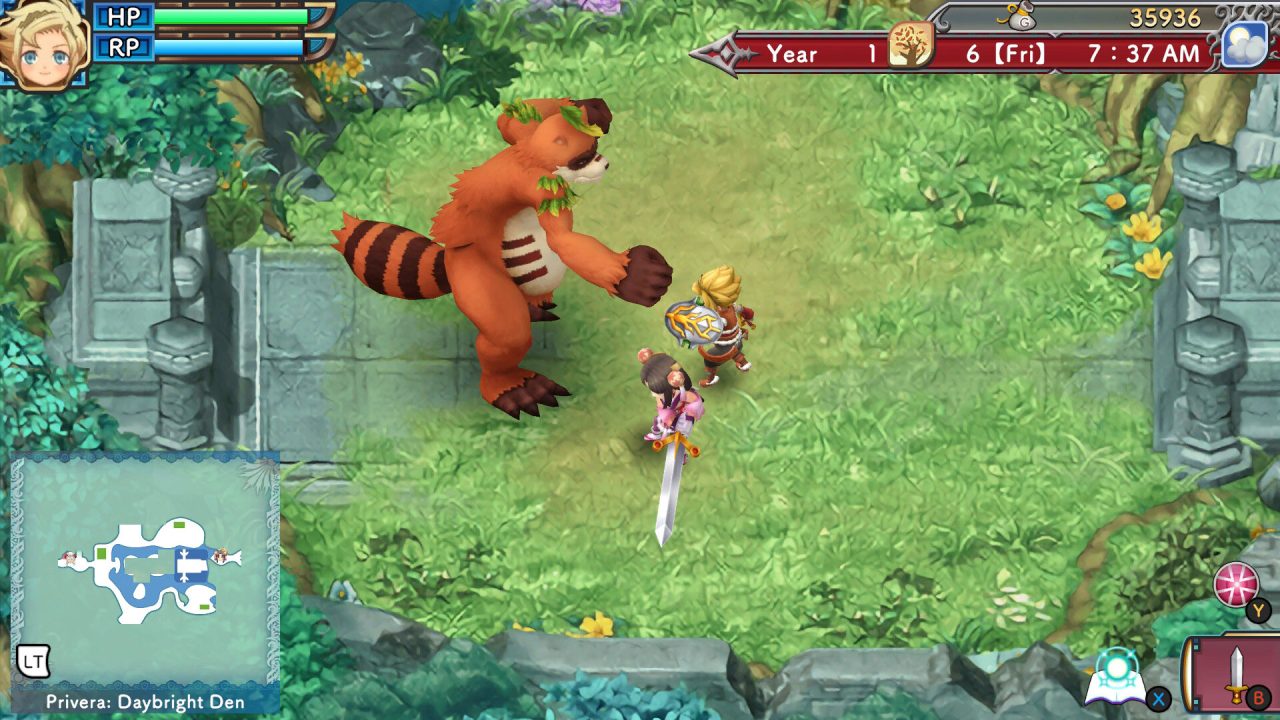When you find a formula that works, it makes sense to stick with it. Sustaining successful elements keeps many series going, and Rune Factory is no exception. It’s no surprise, then, that another classic Rune Factory game has been remastered to join the series’ modern lineup. Rune Factory 3 Special spiffies up the Nintendo DS classic with improved graphics, an additional difficulty setting, and some new post-game content in Newlywed Mode. But in a world where Rune Factory 4 Special and Rune Factory 5 are just as easily accessible, 3’s age may prove its undoing.
Fundamentally, Rune Factory 3 is not so different from Rune Factory 4 or even Rune Factory 5: the series’s gameplay has always been a mix of farming-and-life simulation and action RPG. The farming is fairly simple. The only things to keep track of are the farmland, seasonal crops, and a few farming tools—but if the gameplay ain’t broke, there’s no need to fix it. The action RPG elements, which come into play in the game’s dungeons, are also simplistic and border on button-mashy. But with seven different weapons to master, plus a number of spells to equip, this is another case of leaving well enough alone.
Where the game gets deep is its robust crafting system. Crops can be used in cooking, foraged items can be mixed together into medicines, and mined materials can be made into weapons and accessories. There’s even the option to strengthen items the player already owns. Players can also bestow items upon monsters they find to try to tame them. Tamed monsters reside on the player’s farm, and some, such as the chicken-like Cluckadoodle and the cow-like Buffamoo, serve as the game’s livestock and produce daily drops.
This is standard fare for Rune Factory in this day and age, but it’s a standard that keeps the games compelling and is more than acceptable to maintain. Rune Factory 3 starts to forge its own identity through its protagonist, who can transform into a monster. Mechanically, this gives him access to fist-based attacks in exchange for the ability to equip tools. Narratively, he must keep his ability to transform a secret due to the animosity between humans and monsters. This animosity, however, is surface-level at best. Only two characters actually harbor this hatred, but it’s still meant to be the driving force behind the game’s story. The theoretical conflict between humans and monsters is interesting in concept, but receives surprisingly little care and attention, to the point where the gameplay actively works against it.
Most human characters have no problem with monsters. Some, such as Gaius, are actively willing to help the protagonist keep them on his farm by building him a barn. On top of that, if the protagonist speaks to most characters in his monster form, they’ll think he’s cute even before they know he’s the protagonist. The only human who truly hates monsters is the town mayor, Wells. The story begins with Wells admonishing his granddaughter for bringing an injured golden Wooly—who turns out to be the transformed protagonist—into their home to nurse it back to health. But despite this display, on Spring 19, not long after the story begins, Wells will still host the De-Fluffing Festival.
Festivals are seasonal events, usually in the form of mini-games, that help break up the monotony of farming and dungeon diving. The aim of the De-Fluffing Festival is to “shear” a giant Wooly by hitting it with a weapon. Yet the monster-hating, “keep that Wooly out of our home” Wells not only allows this giant Wooly into the town, but insists multiple times that he’s taken every measure to ensure the weapons won’t harm it.
The only place where the wedge between humans and monsters is truly reinforced is in the desert settlement of the horned univir people. To enter this place, the protagonist must be in his monster form, or else the human-hating leader will drive him out. Beyond this, the story’s ideas barely scratch their own surface. This level of narrative depth is admittedly fairly typical for Rune Factory stories, so it usually doesn’t detract from the overall game experience. What’s more impactful is the fact that there’s only a male protagonist in this farming-and-life simulation game.
Although the official website brands Rune Factory 3 Special as a remake, it’s much better described as a remaster. As such, there are certainly excuses for not adding a female protagonist and making some of the men in the town and settlement into bachelors. However, by the time the original Rune Factory 3 released in Japan in 2009, its parent series Story of Seasons (then titled Harvest Moon) was already consolidating its male and female player options into singular games, such as in Harvest Moon DS: Grand Bazaar and Harvest Moon: Animal Parade in 2008. In truth, Rune Factory 3 was outdated in this aspect from the moment it released. But a lack of female protagonist option and male love interests are actually the least of Rune Factory 3’s problems—problems that also haven’t been addressed in Special.
Some of these issues are harmless hiccups, but surprising all the same considering the game’s remaster status. Sooner or later players will notice that the game’s save menu has its own gentle background music. When selecting a file to save, another jingle plays on top of the background music instead of in place of it, resulting in a messy racket rather than the intended quaint tune.
The game’s controls aren’t so much messy as they are somewhat slippery, and this is most obvious while farming. Imprecise positioning makes it easy to whiff seed and formula placement, leading to some irreversible mishaps. Holding down the R button makes the player character walk, but it doesn’t hold a candle to strafing, which the game lacks. Quickly pressing the R button makes the player dash, but the distinction is finicky, so attempts to dash may not always come to fruition.
The game’s UI can sometimes be a bit too selective, such as on the bottom right of the screen. Displayed here is the equipped tool, with a little B button graphic that lights up when the button is pressed. But more helpful information isn’t displayed, such as how many seeds or how much formula remain in the stack, so players have to keep that in mind themselves.
Players will also need to keep in mind their finances when buying certain major appliances with both gold and lumber, since the UI falls away and shopkeepers’ dialogue can be inconsistent. For instance, when buying a forge or crafting table from Gaius or Raven, the dialogue box displays the player’s “current lumber stock,” with no indication of their current funds. Hazel and Karina’s dialogue boxes, on the other hand, display both the player’s “current funds” and “current lumber stock” when buying furniture.
To grow their funds, players make use of their shipping box, which functions very strangely compared to those in newer titles. Instead of being able to look inside the shipping box to move items around freely, players can only put items into it by holding and then dropping them in. This also means that items can’t be removed from the shipping box, which can lead to even more irreversible accidents, especially for new players who aren’t expecting such a strange game-design choice.
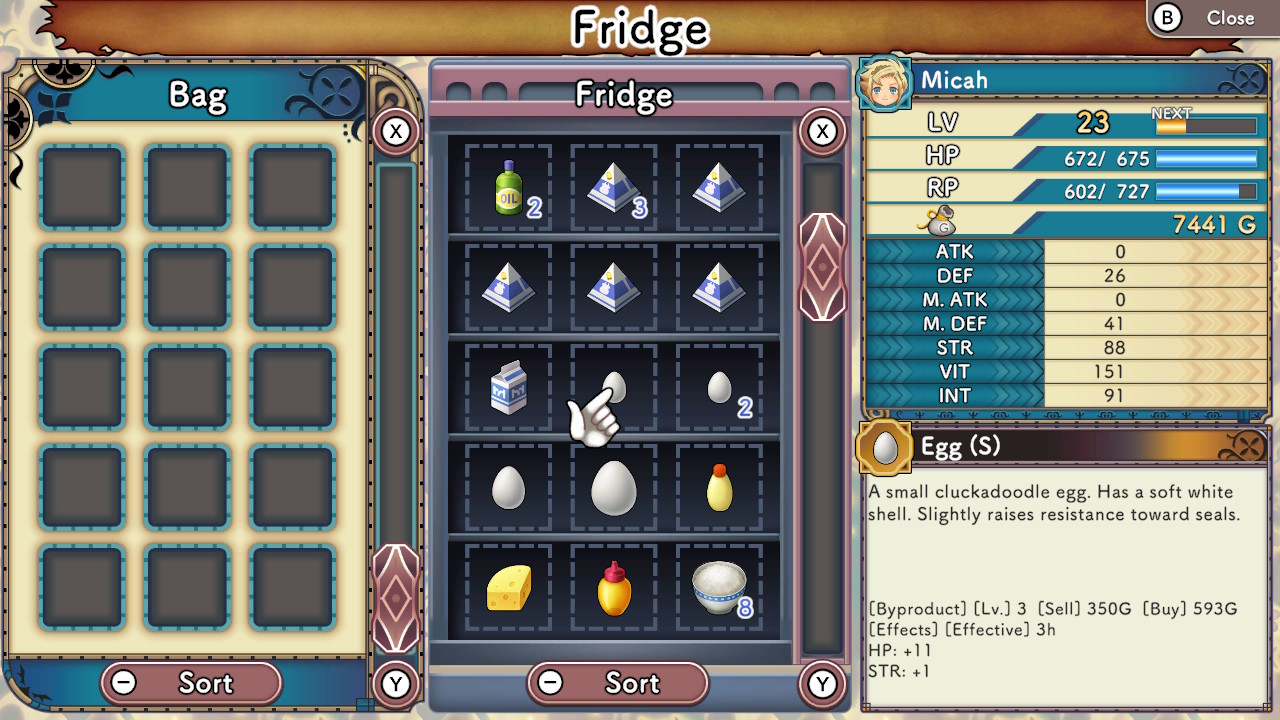
When players want to store items rather than ship them for money, they have the option to use either a storage box or their fridge. In practice, however, they’ll be heading for their fridge more often than not: naturally, food items can only be kept in the fridge. But for some reason, seeds—which are considered tools in Rune Factory 3 Special just as they are in 4—also must go in the fridge. Surprisingly, flowers, grass, withered grass, weeds, and even recovery items such as the Cold Medicine, Antidote Potion, and Para-Gone must be stored in the fridge and not the storage box. The HP-restoring Recovery Potion, on the other hand, does go in the storage box separate from its ailment-healing counterparts. As the game goes on, players will find more items that can go into the storage box, such as weapons and ores. In the meantime, though, the baffling fridge-or-storage distinctions will leave players filling up their fridge a lot faster.
Another factor that leads to overstuffed storage is that items won’t stack if they aren’t the same level. This can be especially annoying when in the process of increasing a crop’s level to its maximum of 10. If players also keep some crops for cooking during this process, heaps of unmaxed stacks will quickly fill the limited storage space. The final storage upgrades for both the box and fridge are admittedly massive, but it takes over 10,000 G to get to that point.
Saving up all that gold by selling crops is a simple matter, but sometimes things can go awry without warning. The weather changes randomly throughout the day, and it can be incredibly unforgiving in seasons like summer thanks to surprise typhoons. It’s possible to plant gold and other rare crops from the flea market event or elsewhere and lose them the very next day thanks to the fickle weather. Adding formula, which “makes your crops more resilient,” doesn’t guarantee their safety, either. A band-aid solution to this problem is to save more frequently during summer and winter and reset in the case of dangerous weather, but it’s a flimsy band-aid at best. Most people play farming games to farm, not to spend most of their time rushing to a save point and hoping for good weather. A way to inform players of upcoming weather and better prepare them for it would have gone a long way in ensuring their hard work doesn’t get completely wiped out on a whim.
These problems at least can be band-aided at all. Other problems are, unfortunately, innate to Rune Factory 3 itself. While such issues were much less likely to be revised in a remaster, they still detract from the overall game experience. Not having a female protagonist and male love interests in a farming simulation game in the year 2023 is already egregious enough. Rune Factory 3 takes it a step further and requires love and marriage for the story to even progress. Relationship-building is always a major part of simulation games, but to require it outright detracts from the appeal of approaching the simulation however the player pleases.
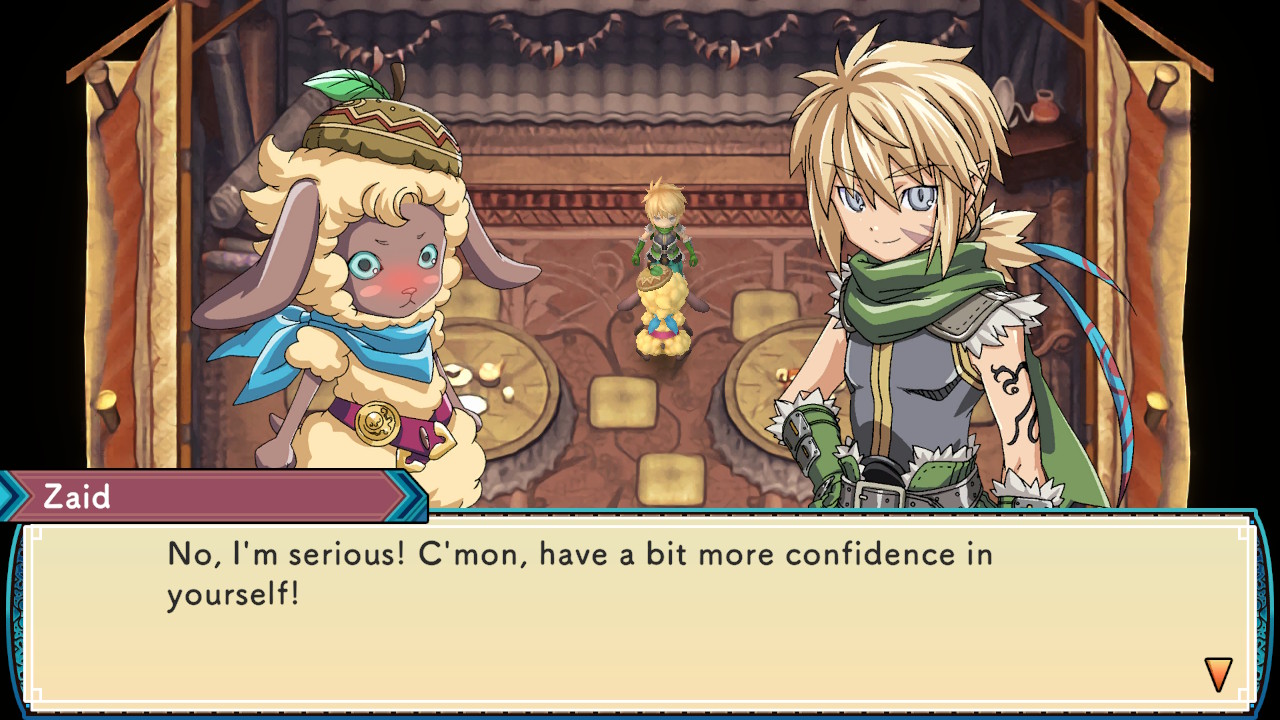
To build up a required relationship with a bachelorette, players have to complete quests for them. This system is, in a vacuum, actually very effective. In other Rune Factory games, such as 4 and its remaster, players practically need a guide to figure out how and when to trigger love events. In Rune Factory 3, however, love events begin as requests that players can accept through the quest message boards and mailbox. This makes the entire process welcomingly straightforward.
The problem is that players can only complete one quest per day. This includes relationship-related quests and general requests that bestow helpful rewards. Rune Factory 3 boasts an outstanding number of quests. Yet limiting the player to one per day feels like an attempt to pad out the content, especially in conjunction with marriage being a requirement. The ability to complete multiple quests per day would unquestionably reveal just how short the game really is.
It’s almost surprising how little there is to do story- and dungeon-wise in Rune Factory 3. There are only five dungeons, all short and simple in layout. For reference, there are 12 dungeons in Rune Factory 4 before counting bonus dungeons. Rune Factory 3’s fifth dungeon can’t be accessed until after players propose to their sweetheart. Before players can propose, they must host the Amity Fair; in order to do so, they must get a bachelorette to fall in love with them.
This seems like a reasonable, natural progression, but there’s an exception: Kuruna, the leader of the univir settlement, can’t fall in love with the protagonist until after the Amity Fair. Players who want to marry Kuruna have to invest in another love interest first, host the Amity Fair, and then build up Kuruna’s relationship. It’s perfectly acceptable to have a challenging, “hidden” love interest in a farming-and-life simulation game like this, but not when the game requires the player to be one step away from initiating a different relationship to complete the game.
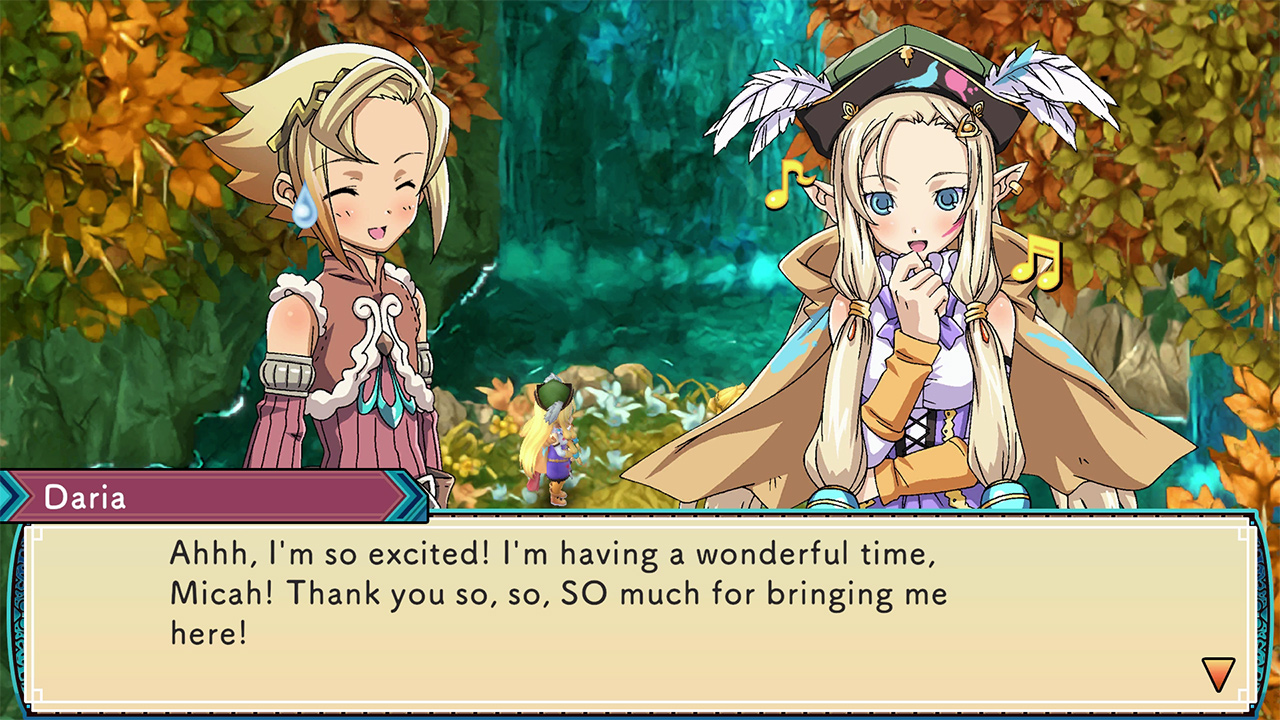
In the end, this attempt to pad out the gameplay only makes the game feel even shorter than it already is. Since marriage can’t be saved for after the credits, there’s essentially nothing new to do once they roll. The Special-exclusive Newlywed Mode, which features story segments centering around each bachelorette, adds some much-needed bulk to the game’s conclusion. But it also serves as a reminder that some new content was in fact made for this remaster, adding further merit to the question of why new quests and dialogue couldn’t be added to make some of the male characters into love interests, too.
Numerous innate elements of Rune Factory 3 Special are only justifiable when looking at the game as its DS original, and maybe when looking at it very leniently as a remaster. But a remaster should have still incorporated the more modern quality-of-life features the series now utilizes. Even without comparing 3 to its series contemporaries, and even without considering that Rune Factory 3 Special is specifically a remaster, its short and surface-level story and questionable design choices hold it back.
As it stands, Rune Factory 3 Special is a welcome addition to the series’ library mainly because it preserves the original and makes it the most accessible it’s ever been. Players interested in replaying the title or who strongly want to play each game in the series in some form can’t go wrong with Rune Factory 3 Special. But anyone not inclined to play them all is much better off with 4 Special, or even 5. Rune Factory 3 Special includes all the basics that make Rune Factory great, but has less content, fewer player options, and fewer quality-of-life features than the current series standard. It’s especially hard to recommend Rune Factory 3 Special over 4 Special when the only area 3 bests 4 in is graphics, yet 3 still retails for $10 more.

